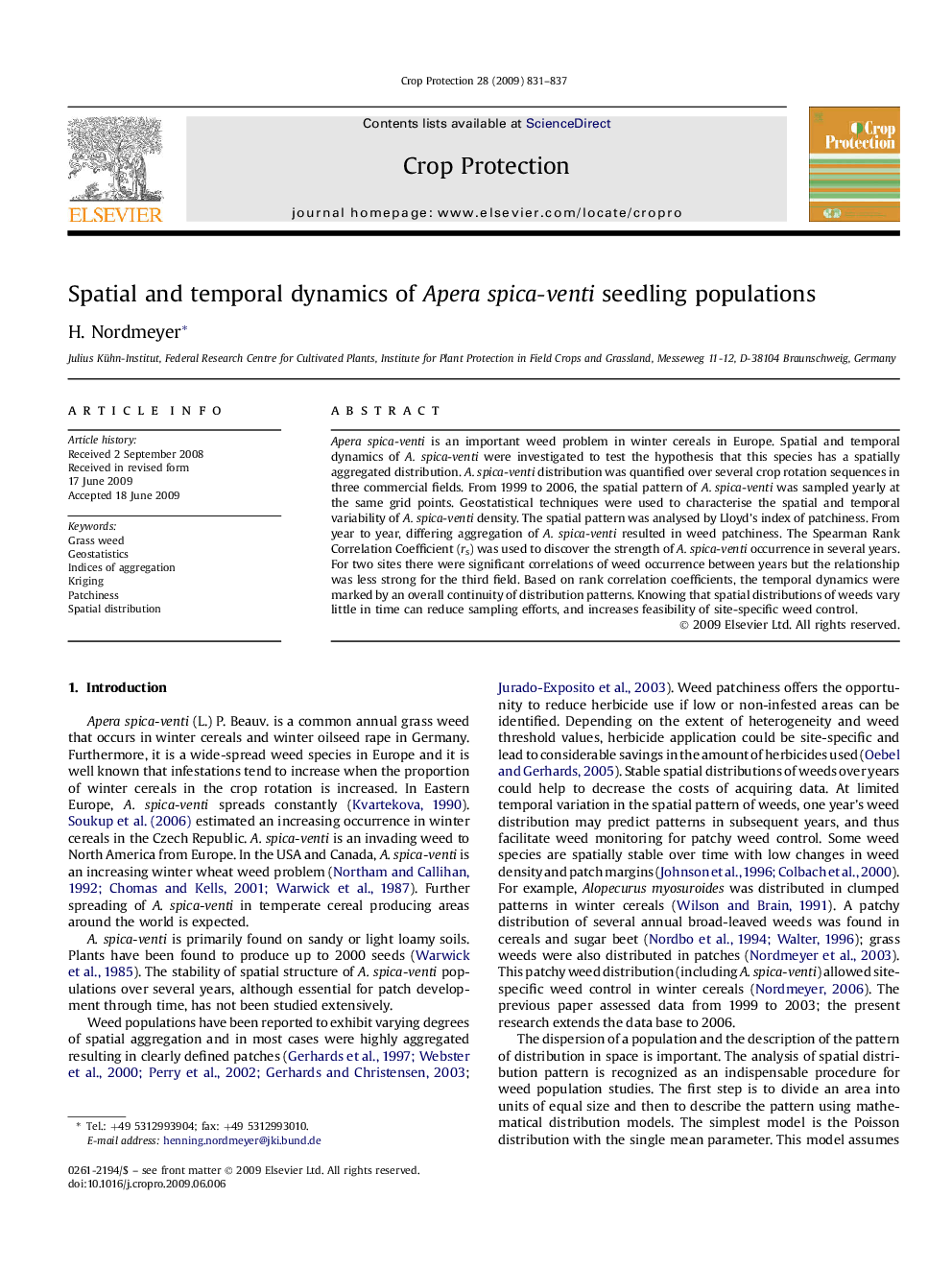| Article ID | Journal | Published Year | Pages | File Type |
|---|---|---|---|---|
| 4507301 | Crop Protection | 2009 | 7 Pages |
Apera spica-venti is an important weed problem in winter cereals in Europe. Spatial and temporal dynamics of A. spica-venti were investigated to test the hypothesis that this species has a spatially aggregated distribution. A. spica-venti distribution was quantified over several crop rotation sequences in three commercial fields. From 1999 to 2006, the spatial pattern of A. spica-venti was sampled yearly at the same grid points. Geostatistical techniques were used to characterise the spatial and temporal variability of A. spica-venti density. The spatial pattern was analysed by Lloyd's index of patchiness. From year to year, differing aggregation of A. spica-venti resulted in weed patchiness. The Spearman Rank Correlation Coefficient (rs) was used to discover the strength of A. spica-venti occurrence in several years. For two sites there were significant correlations of weed occurrence between years but the relationship was less strong for the third field. Based on rank correlation coefficients, the temporal dynamics were marked by an overall continuity of distribution patterns. Knowing that spatial distributions of weeds vary little in time can reduce sampling efforts, and increases feasibility of site-specific weed control.
